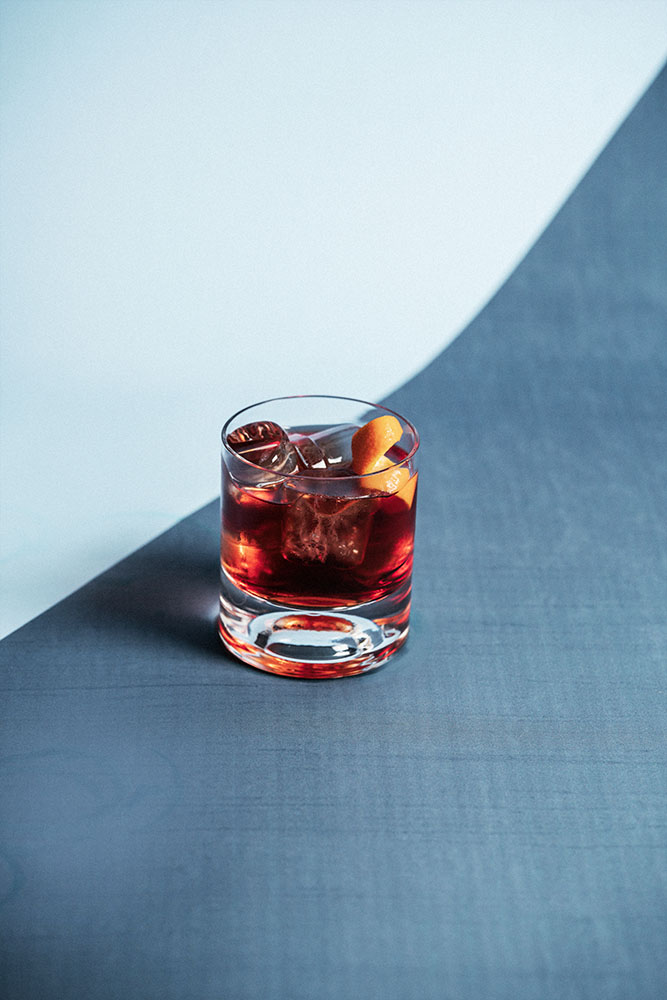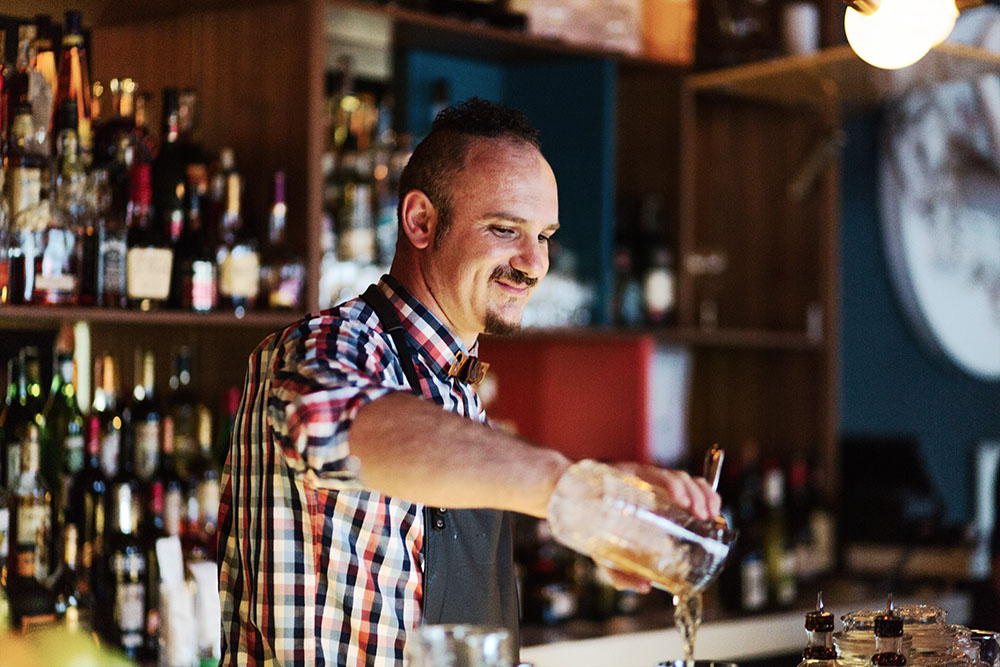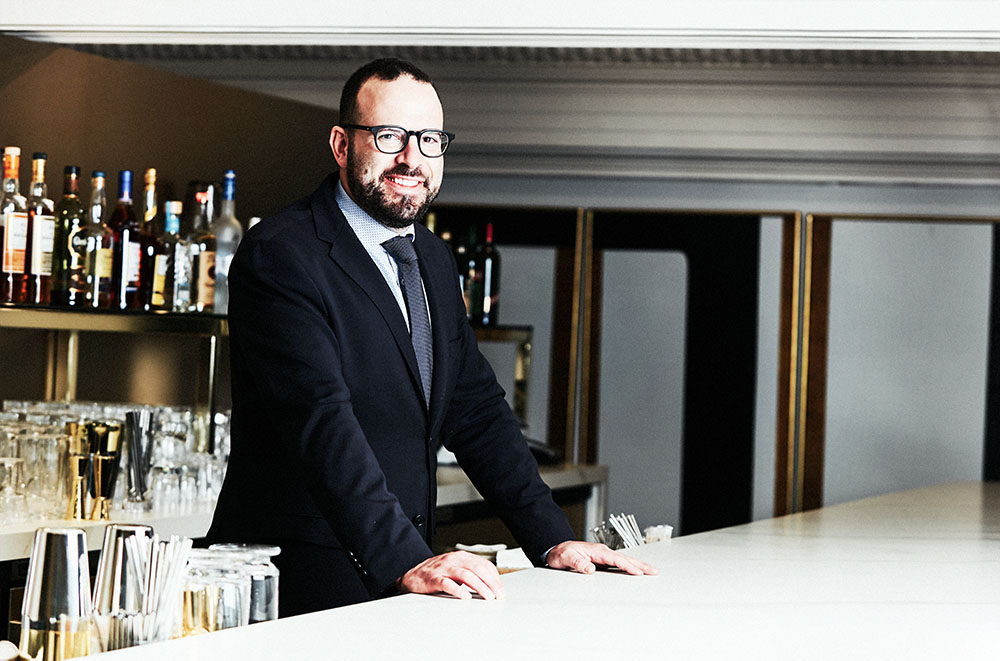Happy birthday, Negroni!
Like almost all cocktail origin stories, the details are slightly hazy and the facts are under some dispute, but most agree that the Negroni is celebrating a milestone this year — turning 100 years old.
The most commonly accepted origin story of this wildly popular aperitivo cocktail is that it was invented in 1919, at Caffé Casoni, in the Piazza Santa Trinita area of Florence. It was a combined effort by bartender Fosco Scarselli and Camillo Negroni, a patron who may or may not have been a Count, but definitely introduced himself as such. “Count” Negroni, the story goes, had asked Scarselli to spike his Milano Torino (the concoction of Campari, sweet vermouth and soda that we now call the Americano) with a healthy dose of gin. A star was born.
In Italy, that is. It would take nearly 30 years for the drink to make its way to the United States — after Orson Welles, filming in Rome, discovered it and spread the word with his famous quote about the drink: “The bitters are excellent for your liver, the gin is bad for you. They balance each other.”
The legendary perfect balance of the Negroni is part of the reason for its success. Much of the rest has to do with the fact that it’s easy to make, easy to remember and, for bar patrons, the perfect “call drink” — one that you can order without even looking at a menu and expect every bar to be able to make.
The Negroni became an important ambassador for Campari, an esoteric-tasting spirit that was far from being a natural fit with North American palates. In addition, the spirit had support from the Campari Soda, as well as its lower-octane cousin, the Americano — the first cocktail James Bond ever ordered (in Ian Fleming’s 1953 book Casino Royale). The Negroni did such a great job popularizing Campari, in fact, that Gruppo Campari used a similar approach to market Aperol, namely, the eponymous Spritz that is now ubiquitous in every Italian restaurant in Canada. And these are likely just the harbingers of obscure Italian spirits, since just about every producer and craft cocktail bartender with a taste for bitter and esoteric flavours is working on inventing modern classic cocktails to help build enthusiasm and name recognition for a second wave of amaro, grappa and traditional liqueurs. Get ready for Apero Craze 2.0 — coming to a bar near you.

Why? Some of it is driven by general enthusiasm for the versatile and complex flavour profile of a lot of spirits. Some, though, comes from the people designing the bar program at the many new Italian restaurants, which are having a moment in Canada. While it’s great to have a little name recognition for the Negroni and Aperol Spritz, most bartenders at Italian restaurants wish the depth of knowledge went a little deeper still, so they could steer people away from the staples and get people interested in a wider range of spirits from the Bel paese. Campari and Aperol are northern Italian aperitivos, after all, and, as such, not necessarily a perfect fit for the many new restaurants offering forays into Roman and southern Italian cuisine. Oliver Stern, for example, the beverage manager of Liberty Group, which includes Toronto’s Don Alfonso 1890 — the sister restaurant of the original, two-Michelin-starred Don Alfonso near Sorrento — would love to be able to offer the drinks that would traditionally be served in Italy before and after meals.
“Having been to that part of Italy and seeing how the lemons are grown up on those hills and smelling the fresh zest as they peel them to make the limoncello, I find I can have a sip of it here in Canada and it’ll just bring me right back to the Amalfi coast,” says Stern. “But it’s still a tough sell in Toronto.”
Stern blames the lack of enthusiasm on the sub-standard, overly-sweet limoncellos that generally make it to Canada, a problem that, incidentally, extends to a general mistrust of grappa, which he’d like to see more people enjoying after dinner. He understands people’s hesitation, though, admitting that he hadn’t really grasped the beauty of grappa until relatively recently — helped along by a visit to the Nardini distillery in Bassano del Grappa.
Now, he trains staff on the category, so they can offer it with confidence to every table after dinner and help guests understand the difference between quality grappa and the lesser expressions.
“The people at Nardini showed us how to give it a little test by rubbing it between your fingers and checking to see if there’s an oily quality, which comes from the tails (as opposed to the heart of the spirit, the good ethanol alcohol),” explains Stern. “I think a lot of people have had a bad grappa experience, sort of like that whole bad tequila experience thing that keeps people from drinking tequila.”
To help patrons get over their fears, Stern has concocted a Grappa Old Fashioned — a pretty savvy move given that Toronto is currently experiencing peak Old Fashioned, with bartenders reporting that this classic whisky cocktail is ordered more than vodka soda, even in clubland. Stern is certain the distillers of fine grappa wouldn’t mind, believing that even Old World producers are starting to come around to North American cocktail culture as a way to promote exports.
“Even more so than the Negroni, I think it was how most people saw the Aperol Spritz and how it drove that spirit from a little-known product to, like, the biggest thing,” Stern says. “Now I feel like all these companies are wanting to jump into cocktails, whereas 10 years ago, especially in the Italian market, they would never think of wanting their product mixed.”
Of course, Aperol is a relatively sweet and lightly bittered, orange-forward aperitivo, which is a far less challenging flavour profile to the North American palate than grappa or even some of the more medicinal-tasting digestivos, which Stern also encourages guests to try alongside (or instead of) dessert.
People’s willingness to dive into amaro often depends on how familiar they are with craft cocktail bars, given that they hold an exalted place in modern mixology. First, they came in as modifiers; now, they are often used as a base or drunk all on their own.
“I will bet Toronto will have an Amaro bar like New York does at some point,” says Michele Maffei of Noce, an Italian restaurant in the city’s Trinity-Bellwoods area. “If done properly, it would work here, too, if it had a big selection and was done in a way that would attract industry people.”
Maffei’s New York reference here is to Amor y Amargo, an East Village bar specializing in elegant bitter cocktails that, since it was established in 2011, has had a big role in promoting Italian spirits to North American bartenders. Maffei, who grew up in Italy and moved here 20 years ago, would love to see more opportunities for a serious treatment of the spirits of his old home, not only because they pair well with the food, but also because, having grown up with them, he understands how to work with them.
“The bitters are excellent for your liver, the gin is bad for you. They balance each other.” – Orson Wells


He’s obviously optimistic, in part, because of the sea change he’s already witnessed, having spent the last seven years behind the wood in different Toronto Italian restaurants.
When Maffri began, even relatively well-marketed spirits like Amaro Lucano, Liquore Strega and Amaro Montenegro were barely known. These days, though, bartenders are praising more obscure, wild herbal products, such as Distilleria Varnelli’s Sibilla and dell’Erborista and are doing so many shots of Fernet-Branca, it’s practically a cliché.
That recognition is still niche, however, and Maffei still asks his servers to warn patrons of the esoteric flavour profile of drinks such as his La Strega Cubana (“The Cuban Witch,” a cocktail made with Fernet, Liquore Strega, rum, egg white, lemon juice and Angostura bitters), since Strega is hyper-herbal, reminiscent of a green chartreuse and Fernet has a minty, earthy, bitter flavour that is definitely what you’d call an acquired taste.
“Fernet became known as the ‘bartender’s handshake,’” Maffei says. “The people saw that bartenders drink Fernet so they all said to themselves, ‘If bartenders drink it, it must be good.’ But a lot of people who tried for the first time didn’t really like the taste of it.”
That’s some of the secret to its success, in fact. Shooting back Fernet-Branca (which cocktail bartenders started doing about a decade ago) is proof that you’re both in-the-know and have graduated past sugary cocktails and into the territory of extremes — sort of like bragging about how high you can go on the Scoville scale.
As Fernet fades, a possibly even cooler amaro is waiting in the wings — Ferro China Baliva, a dark, opaque, intensely bitter, anti-malarial health tonic with added iron. Currently only available in Alberta, this former health tonic — given to children at breakfast, as per Roman doctor Ernesto Baliva’s advice — is starting to gain traction among cocktail bartenders dreaming up Iron Man-themed drinks. The simultaneously classic and impossibly hyper-masculine kitsch label, which depicts a gladiator stepping on a lion’s head, can only help. It might even inspire a few tattoos.
Would James Bond drink it? Is it likely to show up in the Spritz section of brunch menus? Probably not any time soon. However, while it took decades for the first Italian invasion to stealthily introduce Campari and Aperol to the American market, quite frankly, the next wave of Italian spirits seems to be coming down the pipes a lot faster than that.
